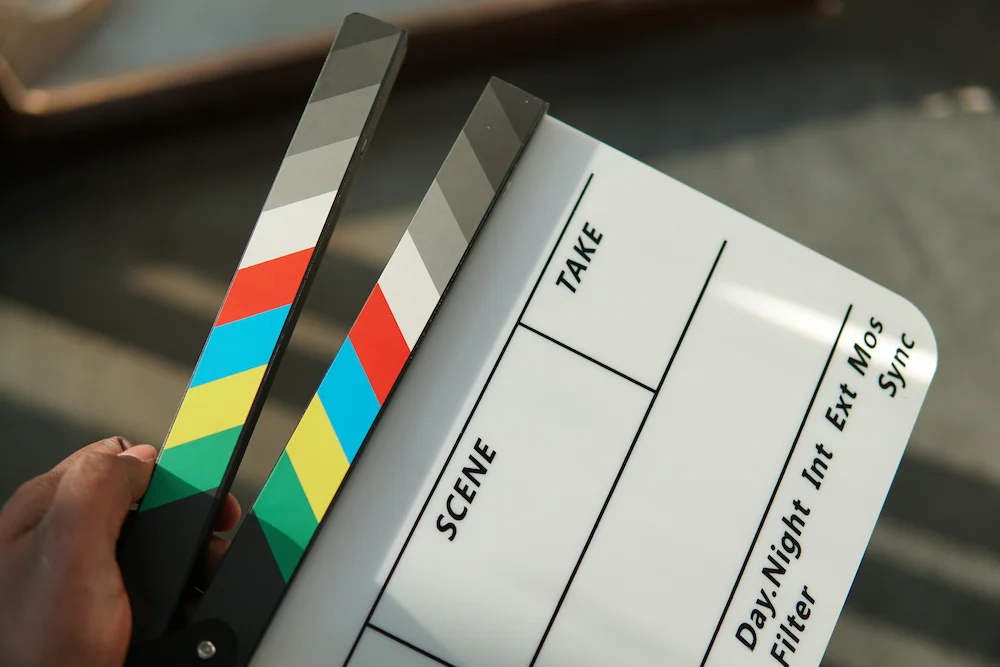Film Treatments: What They Are and Why They Matter
by WriteSeen
A film treatment is a focused narrative outline of your movie, distilling your story, characters, and mood into a concise format. It serves as a bridge between your initial concept and a full script.
Use it to communicate your vision to stakeholders, aligning everyone involved in the film's production. Essential for pitching and pre-production, a treatment helps secure funding and interest in your project.
In this article, discover:
- Key components of a treatment and how they contribute to storytelling.
- Crucial formatting tips to maintain professionalism.
- Differences between treatments and screenplays.
Why You Need a Film Treatment in Scriptwriting
When you're getting into film, a solid treatment can make the difference between your project collecting dust and heading into production. It’s your narrative’s pre-script pitch—a streamlined version for producers and stakeholders.
Why Film Treatments Matter:
- Clear Vision: Treatments help clarify your ideas early, ensuring every team member understands the story's core.
- Effective Pitching: Investors need a compelling reason to back a project. A sharp treatment highlights the unique aspects of your story for maximum impact.
- Structured Development: Treatments create a blueprint for your screenplay, offering a structured path from concept to final draft.
Treatments are about ensuring clarity and direction. They provide the breathing room to explore your story at a macro level without diving into complex dialogue and scene details. This step doesn’t just align your team—it can be the spark that ignites interest from investors and collaborators. In the crowded world of filmmaking where every second counts, having a concise treatment lined up sets the stage for your project's success.

Key Components of a Film Treatment
Creating a film treatment involves distilling your project down to its essence while leaving room for imagination. Let's break it down:
Essential Elements
- Title and Logline: Your film’s title should capture the essence of the story. Pair it with a snappy logline—a one or two-sentence summary that hooks the reader right away.
- Character Descriptions: Outline main characters with a focus on their motivations and development arcs. This provides a glimpse of who drives the story.
- Narrative Summary: Outline the story from beginning to end. This should cover the major plot points and arcs and how they intertwine.
- Act Structure Overviews: Give a clear breakdown of acts, such as exposition, rising action, climax, and resolution, to show your story’s framework.
Incorporating these components ensures your treatment is comprehensive and compelling. It should provide a cohesive overview that answers questions about what, who, and why—each element spotlighting vital aspects of your film. At WriteSeen, we understand the importance of these components in gaining not only attention but buy-in from critical stakeholders. The better your treatment, the stronger your project’s foundation.
Film Treatment Formatting: Tips and Best Practices
Formatting your film treatment isn’t just about following rules—it's about readability and professionalism. Let's tackle some key guidelines:
- Length and Structure: Keep the treatment between 2 to 10 pages. This range is ideal for maintaining interest without overwhelming detail.
- Consistent Style: Use active voice and concise language. Stick to standard fonts and margins. This keeps the document from feeling cluttered.
- Headings for Clarity: Break content into easily navigable sections with headings, ensuring quick access to key areas.
- Visual Elements: For an informative edge, integrate visual aides like mood boards or character sketches when necessary.
While focusing on clarity, remember that the treatment is an art form. It balances information delivery with the intrigue of storytelling. Think of it as your cinematic elevator pitch—every component speaks, every word sings your vision. This is the step where a well-organized document communicates your creative dream.
Treatments are your narrative's pitch deck, connecting potential with clarity through structured storytelling.
How Long Should a Film Treatment Be?
Deciding the length of your film treatment depends on your audience and the complexity of your project. Here's how to navigate:
- Short-Form Treatments (2-5 pages): Ideal for straightforward commercial films or projects with smaller scopes. They convey the essence quickly and efficiently.
- Long-Form Treatments (6-10+ pages): Suitable for more intricate or character-driven stories. These provide a detailed roadmap for complex plotlines and settings.
Choosing between short and long-form hinges on your narrative’s depth and your audience. In a digital era where time is a commodity, presenting your narrative succinctly without losing its core is crucial. Whether brief or detailed, each treatment must vividly project your vision, capturing attention while laying the foundation for deeper exploration. As filmmakers, crafting the ideal treatment length requires striking a balance between thoroughness and intrigue.
Differences Between a Film Treatment and a Screenplay
Understanding the distinction between a film treatment and a screenplay is vital. Each plays a unique role in the filmmaking process, shaping your project’s journey from concept to screen.
Key Differences
- Scope and Detail: Treatments highlight the broad strokes of your story, capturing essence without intricate detail. Screenplays dive deep, exploring dialogue, scene transitions, and detailed stage directions.
- Purpose and Usage: Treatments initiate conversations and solicit interest. They're tools for pitching and refining ideas. Screenplays are actionable blueprints for production teams, ensuring every beat and moment is ready to film.
- Format Variation: Screenplays adhere to strict formatting standards, crucial for production logistics. Treatments offer more flexibility, focusing on narrative flow and character arcs instead.
Recognizing these differences empowers you to use each document effectively within your project's development. Using both strategically helps ensure continuity, creativity, and feasibility as your story evolves. Here at WriteSeen, we see how creators transform outlined visions into scripts that bring those visions vividly to life, driving creative projects toward production.

How to Write an Effective Film Treatment
Creating a compelling treatment takes skill and strategy. Here’s how to make yours stand out and secure that essential buy-in.
Steps to Crafting a Treatment
-
Strong Opening: Start with a catchy title and engaging logline. Capture attention immediately, setting the stage for your film’s intrigue.
-
Develop Characters: Characters need depth. Flesh out their motivations and backstories to showcase their roles and arcs within the narrative. This ensures stakeholders feel invested in their journeys.
-
Narrative Flow: Your narrative summary should map out the film’s key scenes and turning points. Cover critical emotional beats and tentpole moments without bogging down in detail.
-
Theme Consistency: Make sure your treatment aligns with the thematic core of your story. Showcase how themes unfold across character journeys and plot development.
An effective treatment is your secret weapon, marshaling resources by clearly presenting what makes your story unique. Always refine through feedback and iteration—using communities like ours at WriteSeen ensures you polish your craft through collaborative insights.
Film Treatment Examples and Inspiration
Drawing inspiration from successful treatments can elevate your own practice. Exploring examples across genres provides insight into effective storytelling methods and structures.
What to Look For
- Genre-Specific Techniques: Horror treatments thrive on atmosphere and tension, while romantic comedies focus on chemistry and dialogue. Study treatments that excel within their genres to identify valuable techniques and elements.
- Cultural Relevance: Films like "Get Out" or "Parasite" resonate not just with story, but by tapping into cultural touchpoints. Analyze treatments with strong cultural context for deeper insight.
- Strong World-Building: Look at sci-fi treatments or fantasy genres as prime examples. They flourish by vividly outlining worlds and systems integral to their plots.
Exploring these examples provides a wellspring of possibilities, refining your treatment-writing approach. You gain tools to potentially redefine storytelling in your niche, inspired by successful narratives.
Leveraging WriteSeen for Your Film Treatments
WriteSeen isn’t just a platform—it’s a toolset. A hub for creators to innovate, polish, and present projects with confidence.
Maximize Your Impact
- Collaborative Environment: Connect with other creators to develop ideas, exchange feedback, and fine-tune narratives.
- Secure and Documented: Upload and timestamp your treatments. Maintain verifiable proof of originality and ownership as you iterate and revise.
- Visibility Control: Share drafts securely with selected industry professionals or community members for curated feedback.
With WriteSeen, you step into a realm where creativity meets professionalism, nurturing your film’s journey from concept to screen. It’s where treatments evolve into scripts, and visions become shared cinema experiences.
Conclusion
A film treatment is your project’s first impression—a blueprint that distills your vision into a compelling, professional narrative. It sets the stage for development, guiding collaborators and attracting stakeholders with clarity and direction. Whether you're preparing to write a full script or secure early-stage backing, the treatment is your foundation.
Well-crafted film treatments highlight character arcs, major plot points, and thematic resonance without overwhelming detail. This balance allows readers to grasp your story’s potential quickly, making it a powerful tool for both pitching and internal development. It’s where storytelling meets structure in its most strategic form.
Join WriteSeen to create, refine, and securely share your film treatment with a global creative network. From timestamped uploads to collaborative feedback, our tools help elevate your work and position it for success. Your cinematic journey starts with a single page—make it count at WriteSeen.
TAGS